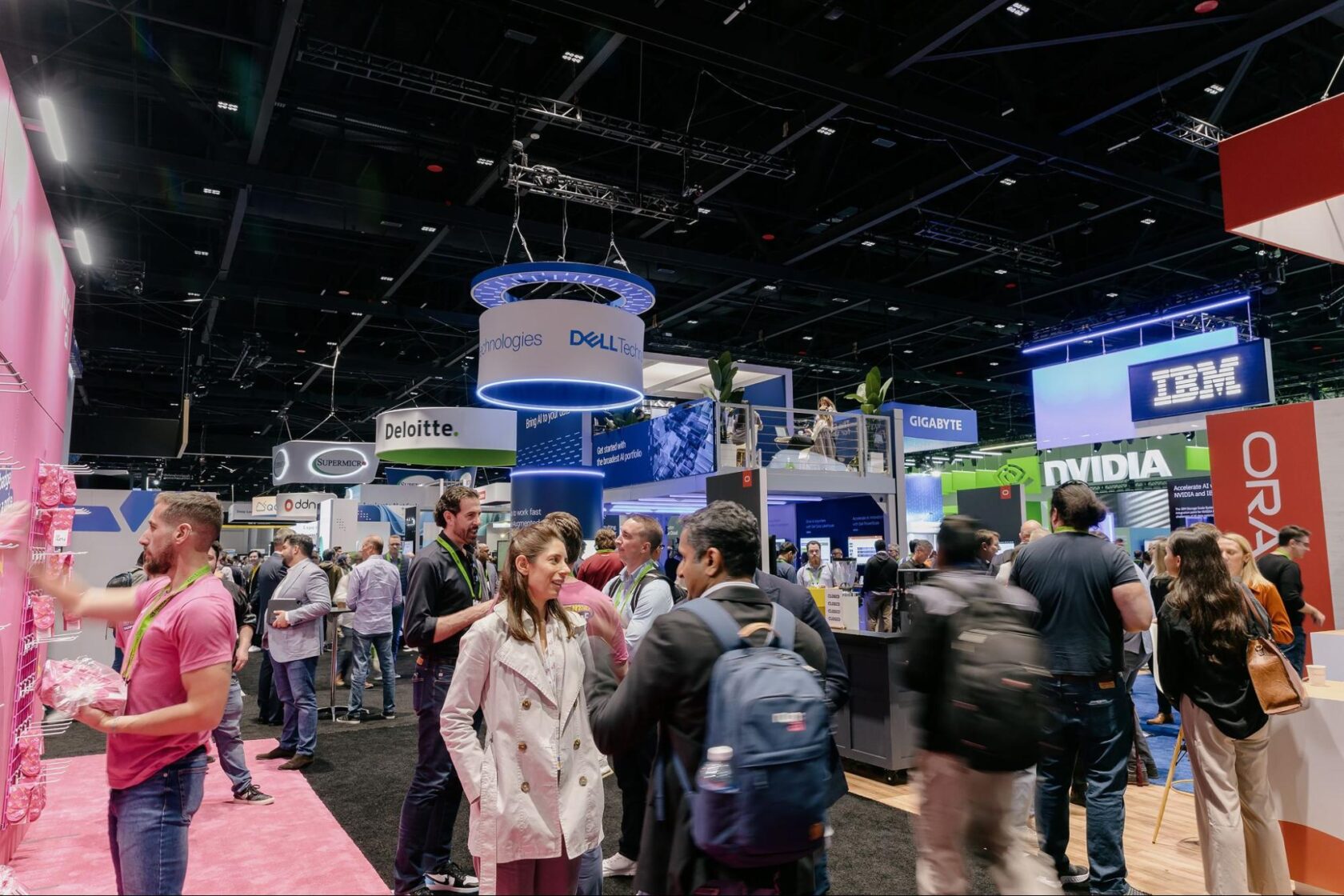What’s next in AI is at GTC 2025. Not only the technology, but the people and ideas that are pushing AI forward — creating new opportunities, novel solutions and whole new ways of thinking. For all of that, this is the place.
Here’s where to find the news, hear the discussions, see the robots and ponder the just-plain mind-blowing. From the keynote to the final session, check back for live coverage kicking off when the doors open on Monday, March 17, in San Jose, California.
State of AI Art: How Artists Bring AI, Robots Into Creative Process 🔗
“Consumption,” a piece by BREAKFAST, on display at GTC.
Artists over millennia have created with every medium available — fruit and vegetable dyes, blocks of marble, acrylic paints, cameras, rendering software, 3D printers. They’re now harnessing AI and robotics to build immersive experiences that reflect on the ways people respond to and interact with technology.
In a GTC panel discussion hosted today by Heather Schoell, creative director of AI strategy at NVIDIA, four artists shared how they use AI and robotics in their creative processes.
The integration of robotics in art “is a very logical continuation in what is a very long spectrum of humans and our relationship to our tools,” said panelist Catie Cuan, founder of consumer AI company Zenie and a postdoc at Stanford University, where she leads art and robotics efforts at the Stanford Robotics Center.
A former professional dancer, Cuan’s works include an eight-hour duet with a robot arm and a symphony of dancing robots that played sounds as they moved.
Another panelist, Alexander Reben, was OpenAI’s first artist in residence. He’s used large language models, visual generative AI models and NeRFs to create 3D sculptures.
Interactive art by two of the panelists — Zolty, a kinetic and robotics artist known as BREAKFAST, and Emanuel Gollob, a doctoral researcher at the University of Arts Linz, Austria — is on display at the main entrance of GTC.
BREAKFAST works with real-time data to create large kinetic art sculptures that are on display aboard a Royal Caribbean cruise ship and the Fontainebleau hotel in Las Vegas. The studio’s piece at GTC, titled “Consumption,” runs on an NVIDIA RTX GPU and features robotic arches that move in response to real-time data about water usage, including rainfall, reservoirs, groundwater levels and municipal supplies.
Gollob’s robotic installation, called “Doing Nothing With AI,” uses generative robot control, brainwave measurements and reinforcement learning to move in a way that guides a participant wearing an EEG headband to do nothing and enjoy a moment of inaction.
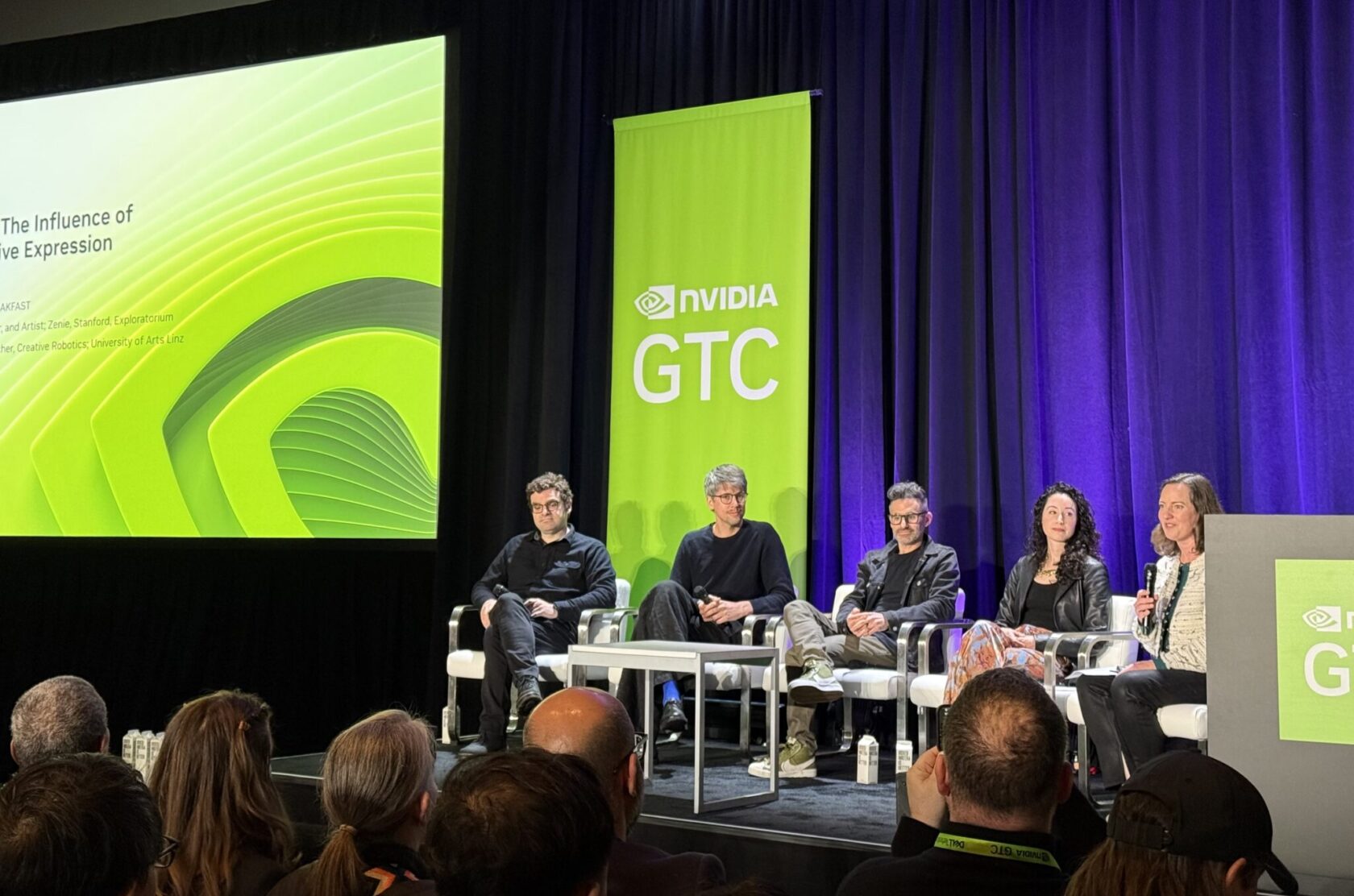
Panelists Discuss Energy Efficiency in the Age of Generative AI 🔗
To a packed room of attendees, panelists held an illuminating discussion on AI, energy and climate issues today at GTC. Josh Parker, senior director of corporate sustainability at NVIDIA, was joined by Lauren Risi from the Wilson Center, David Sandalow from Columbia University and Bernhard Lorentz of Deloitte.
“In the world of climate change, there’s an enormous amount of things that AI can do,” said Sandalow. “How can you mobilize AI tools to mitigate climate change?”
The industry experts addressed concerns about energy efficiency with the rise of generative AI and the uptick in data centers.
“NVIDIA GPUs are delivering 100,000x better energy efficiency over the past decade,” said Parker, summing up the energy efficiency gains from NVIDIA GPUs.
BMW Group Shows Off 3D Collaboration for Battery Assembly Factories 🔗
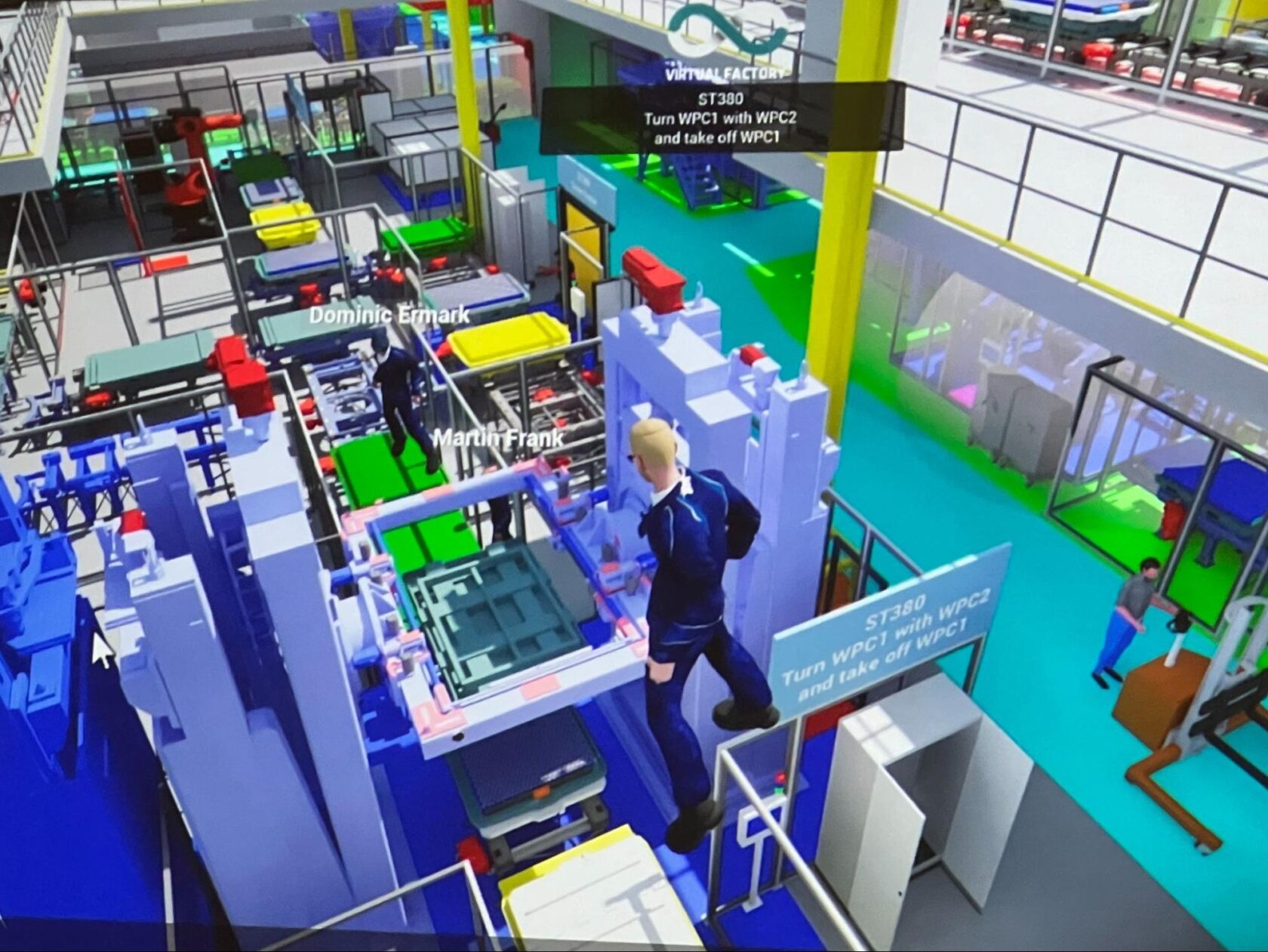
BMW Group presented the latest updates to its 3D AppStore today at GTC.
The 3D AppStore, BMW’s cloud streaming service for high-end visualization, is now making it possible to support the automaker’s battery assembly process across various factories worldwide. It allows engineers, designers and others to work in the digital environment collaboratively.
“With the avatars, they see the factory scene and can be in there together, and then you can basically just ask what is happening here, and the AI gives you a detailed description of what the station here is doing,” said Xaver Freiherr Loeffelholz von Colberg, product owner of 3D AppStore at BMW Group.
Offering a glimpse into the future of automotive design and manufacturing, BMW has two more speaker sessions on Thursday, March 20.
Explaining Tokens — the Language and Currency of AI 🔗

GTC attendees are likely to hear a lot about tokens — the language and currency of AI.
Tokens are units of data processed by AI models during training and inference, enabling prediction, generation and reasoning. The faster tokens can be processed, the faster AI models can learn and respond.
Get up to speed on tokens, tokenization and the ways enterprises can boost revenue by lowering cost per token in our explainer article.
GTC 2025: Real AI, Real Problems, Real Solutions 🔗
AI is confronting humanity’s toughest challenges head on. See it unfold next week at the NVIDIA GTC conference in San Jose, California.
From transformative healthcare sessions like “Revolutionizing Cardiac MRI Analysis and Diagnosis With AI” and “Designing the Future: Protein Engineering, AI and Responsible Innovation” to environmental breakthroughs in “Autonomous Systems and Remote Sensing for Better Earth Data,” “The Role of AI and Accelerated Computing in Understanding and Mitigating Urban Climate Change” and “Enhancing Photovoltaic Power Prediction With High-Resolution Weather Forecasting From NVIDIA Earth-2,” the impact is tangible and global.
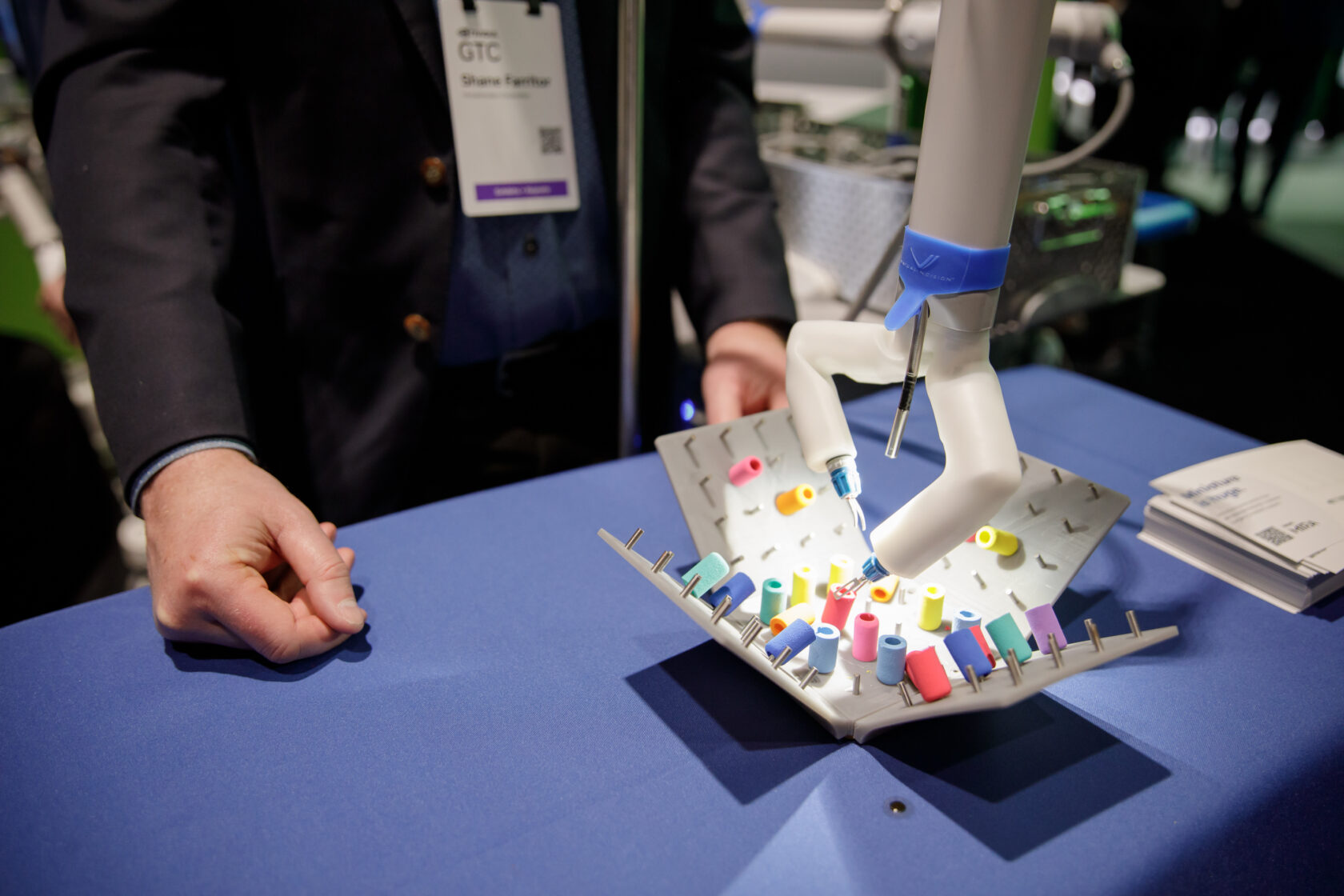
The Future Rolls Into San Jose 🔗
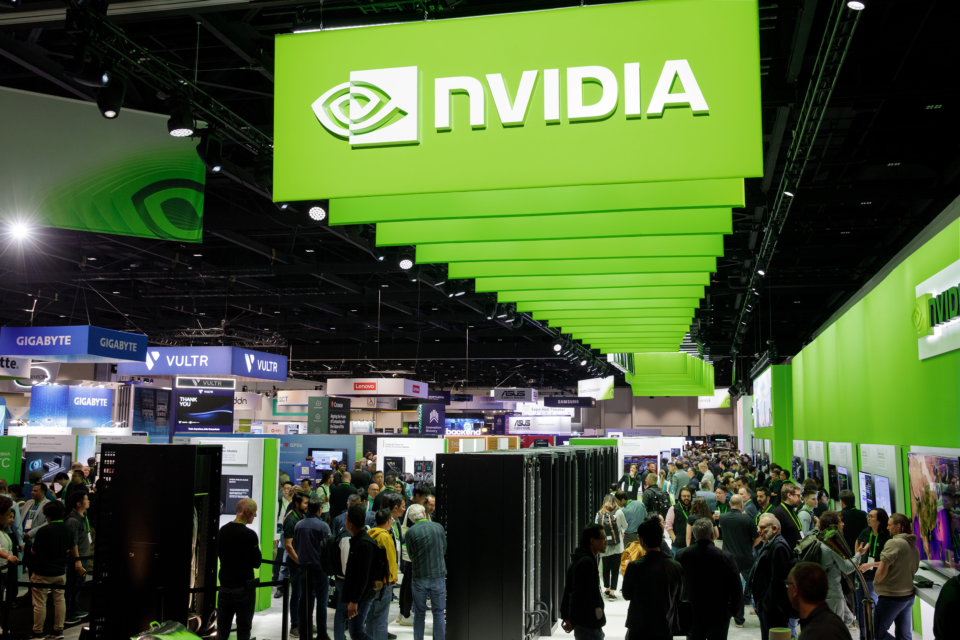
Anyone who’s been in downtown San Jose lately has seen it happening. The banners are up. The streets are shifting. The whole city is getting a fresh coat of NVIDIA green.
From March 17-21, San Jose will become a crossroads for the thinkers, tinkerers and true enthusiasts of AI, robotics and accelerated computing. The conversations will be sharp, fast-moving and sometimes improbable — but that’s the point.
At the center of it all? NVIDIA founder and CEO Jensen Huang’s keynote, offering a glimpse into the future. It’ll take place at the SAP Center on Tuesday, March 18, at 10 a.m. PT. Expect big ideas, a few surprises, some roars of laughter and the occasional moment that leaves the room silent.
But GTC isn’t just what happens on stage. It’s a conference that refuses to stay inside its walls. It spills out into sessions at McEnery Convention Center, hands-on demos at the Tech Interactive Museum, late-night conversations at the Plaza de César Chávez night market and more. San Jose isn’t just hosting GTC. It’s becoming it.
The speakers are a mix of visionaries and builders — the kind of people who make you rethink what’s possible:
🧠 Yann LeCun – chief AI scientist at Meta, professor, New York University🏆 Frances Arnold – Nobel Laureate, Caltech🚗 RJ Scaringe – founder and CEO of Rivian🤖 Pieter Abbeel – robotics pioneer, UC Berkeley🌍 Arthur Mensch – CEO of Mistral AI🌮 Joe Park – chief digital and technology officer of Yum! Brands♟️ Noam Brown – research scientist at OpenAI
Some are pushing the limits of AI itself; others are weaving it into the world around us.
📢 Want in? Register now.
Check back here for what to watch, read and play — and what it all means. Tune in to all the big moments, the small surprises and the ideas that’ll stick for years to come.
See you in San Jose. #GTC25
